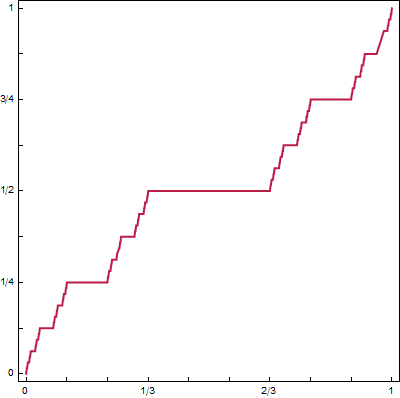
Measure Theory
I developed a measure theory course for advanced undergraduates at
Bard College, which I taught twice as a regular class and four times as a tutorial for one to three students. This page contains information about this course.
Summary
The course was designed for students who taken a semester of introductory real analysis as well as a semester of point-set topology, and most of the students were seniors who were bound for Ph.D. programs in pure or applied mathematics. The course covered advanced analysis including measure theory and Lebesgue integration, with an introduction to Banach spaces and Hilbert spaces and applications to Fourier series, convolutions, and probability theory.
Notes
The course was based on a series of notes that I wrote on advanced analysis topics:
Homework Assignments
Here are the weekly homework assignments for the course, which were worth 50% of the course grade. Students were encouraged to work together on the homework but were required to write up their own solutions individually in LaTeX.
- Homework 1 (Dirichlet's Test, Uniform Differentiability, Convolutions)
- Homework 2 (Pointwise Convergence of Fourier Series)
- Homework 3 (Measurable Sets, Outer Measures)
- Homework 4 (Lebesgue Measure, Oscillation, Borel Sets)
- Homework 5 (Measurable and Non-Measurable Functions)
- Homework 6 (Convergence Theorems)
- Homework 7 (More Convergence Theorems)
- Homework 8 (Inequalities and Norms)
- Homework 9 (Contraction Maps, Picard Iteration, Dual Spaces)
- Homework 10 (Uniform Density of Trigonometric Polynomials)
- Homework 11 (Second Borel–Cantelli Lemma, Random Walks)
Takehome Exams
There were two takehome exams for the course, both of which were worth 25% of the grade.
Syllabus
Here was the syllabus for the course.
Course Description
This course is a continuation of math 361. Our goal is to cover those topics in analysis typically required for beginning graduate courses. The first half of the course will be an introduction to Lebesgue measure and Lebesgue integration on the real line and in higher dimensions. The second half will cover a variety of topics, including Hilbert and Banach spaces, applications of measure theory to probability, differentiation and integration in multiple dimensions, and so forth. The prerequisite is Math 361 (Real Analysis).
Textbook
There is no textbook for the course, but there are several books that you may find it helpful to consult:
The last of these is available for free online, and is quite good. I especially recommend reading through §2.1 on problem-solving strategies in analysis.
Homework, Exams, and Grading
Homework
There will be weekly homework assignments, which will consist almost entirely of formal proofs. You are encouraged to work together on the homework, but you should write up your own solutions individually, and you must acknowledge any collaborators. Homework solutions must be written in LaTeX, and should be submitted to me by e-mail.
Exams and Grading
The grade will be based on the weekly homework, the takehome midterm exam, the takehome final exam:
| Homework | 50% |
| Midterm Exam | 25% |
| Final Exam | 25% |
